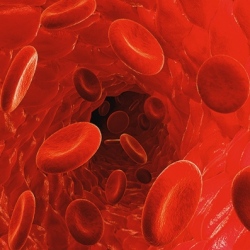
Although it’s usually used as a compliment, having a big heart can be a good thing or a bad thing. When it needs to pump more blood, the heart can grow in a good way in response to exercise and pregnancy, but after a heart attack, swelling of the heart muscles can lead to further complications.
Now, Canadian scientists have found that a protein called cardiotrophin 1 (CT1) can essentially trick the heart into the good kind of growth, and reduce the bad kind.
Heart failure is a life-threatening condition where the organ can’t adequately pump blood around the body, and often the only treatment is a transplant. It can be caused by a heart attack that damages muscles in the left side of the organ, or by pulmonary hypertension, whereby high blood pressure in the lungs damages the right side.
"When part of the heart dies, the remaining muscles try to adapt by getting bigger, but this happens in a dysfunctional way and it doesn’t actually help the heart pump more blood," says Lynn Megeney, senior author of the study. "We found that CT1 causes heart muscles to grow in a more healthy way and it also stimulates blood vessel growth in the heart. This actually increases the heart’s ability to pump blood, just like what you would see with exercise and pregnancy."
In the study, researchers from the Ottawa Hospital, Carleton University, and the University of Ottawa tested the effects of CT1 on the hearts of mice and rats, both healthy and damaged, as well as lab-grown heart cells.
The results showed that heart muscle cells treated with CT1 grew more blood vessels, formed longer, healthier fibers, and could pump blood better. The protein was also able to dramatically improve function in damaged hearts, no matter which side of the organ was affected.
"This experimental therapy is very exciting, particularly because it shows promise in treating both left and right heart failure," says Duncan Stewart, co-senior author of the study. "Currently, the only treatment for right heart failure is a transplant. And although we have drugs that can reduce the symptoms of left heart failure, we can’t fix the problem, and left heart failure often leads to right heart failure over time."
To test the opposite, some of the studies used a drug called phenylephrine (PE), which can cause the dysfunctional growth. In those tests, heart muscle fibers grew wider instead of longer, didn’t grow extra blood vessels and unlike the CT1 growth, which would revert back to normal after a while, the PE-induced growth was irreversible.
The researchers are currently seeking patents for treating heart conditions with CT1, and are hoping to soon test the protein in human patients.
